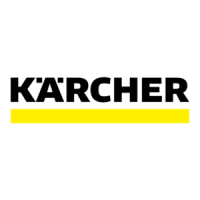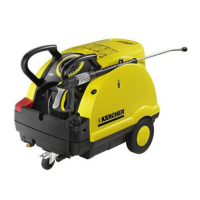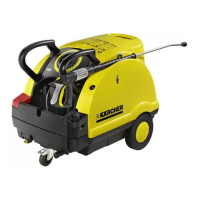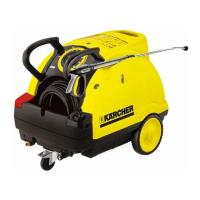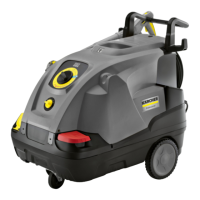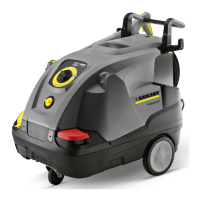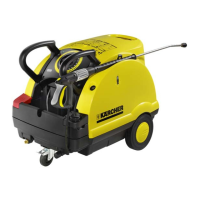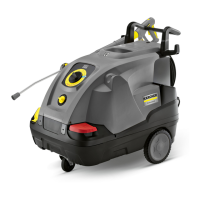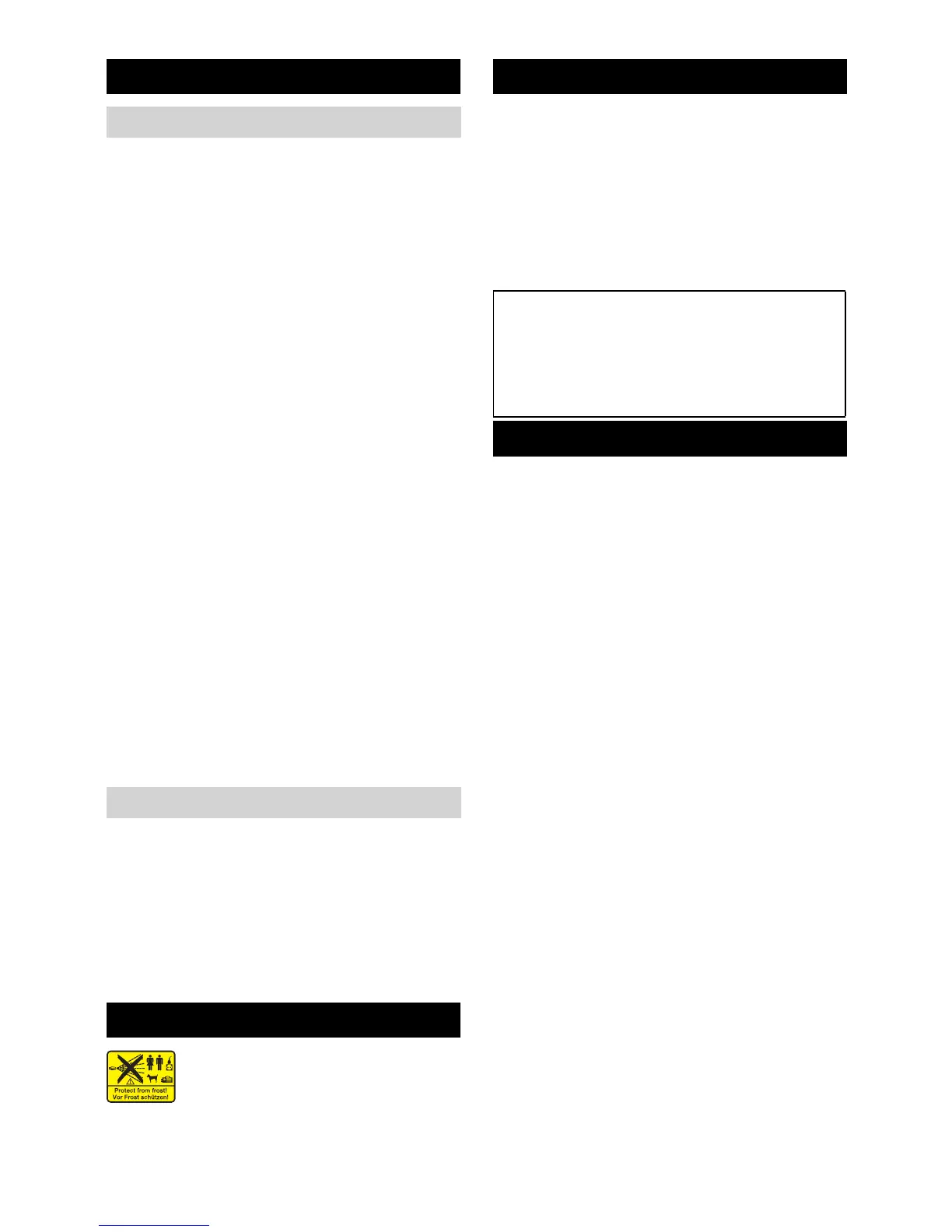 Loading...
Loading...
Do you have a question about the Kärcher HDS 698 C ECO and is the answer not in the manual?
| Flow Rate | 600 l/h |
|---|---|
| Fuel Tank | 25 l |
| Voltage | 230 V |
| Frequency | 50 Hz |
| Hose Length | 10 m |
Information regarding product ingredients is available online for user reference.
Explains the meaning of various safety symbols used throughout the manual.
Lists and illustrates the main components of the pressure washer.
Identifies and explains the control panel indicators and switches.
Explains the meaning of various symbols found on the appliance itself.
Describes the function and operation of the overflow valve.
Explains the role of the safety valve in system protection.
Details the mechanism preventing operation without water.
Explains the function of the motor overload protection.
Describes the safety feature that stops the machine at high temperatures.
Instructions on how to check and maintain the oil level.
Guidance on adding liquid softener to prevent calcification.
Step-by-step guide for connecting the spray gun and hose assembly.
Instructions for connecting the water supply hose.
Instructions for drawing water from an external container.
Guidance on proper electrical connection procedures.
Safety precautions specific to operating the appliance.
Step-by-step guide for starting the machine.
How to set the water temperature for cleaning tasks.
Guidance on using different nozzles for effective cleaning.
Instructions on effective cleaning techniques with detergent.
How to use the appliance with cold water for specific tasks.
How to set pressure, temperature, and detergent for cleaning.
Instructions for using hot water for cleaning applications.
Guide for operating the appliance in steam mode.
Steps to take after using detergent for rinsing.
Procedures for safely shutting down the machine.
Precautions to prevent frost damage during storage.
Steps to drain water from the system for storage.
How to protect the appliance from freezing with antifreeze.
Schedule and types of routine maintenance tasks.
Detailed procedures for cleaning filters and oil changes.
Detailed step-by-step instructions for changing the engine oil.
Explains what to do when the fuel level indicator is on.
Troubleshooting steps when the ready indicator is off.
What to do if the liquid softener indicator lights up.
Actions to take when the detergent indicator is on.
How to handle the exhaust temperature limiter warning.
Diagnosing and resolving issues when the appliance won't start.
Steps to fix the issue of the device not building pressure.
Troubleshooting water leaks from the appliance.
Diagnosing intermittent operation while hand spray gun is closed.
Resolving issues with the detergent intake system.
Steps to troubleshoot when the burner fails to ignite.
Resolving issues with not reaching the set temperature during hot water use.
